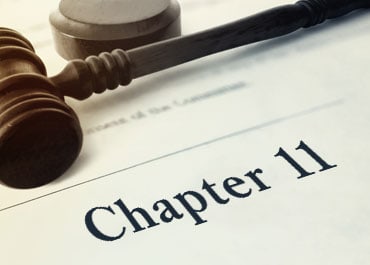Call For Free 15 Minute Consultation(212) 739-7599
Lawline Online Course: A field Manual for Involuntary Bankruptcies - Thursday, 11/5/2020 at 3:00pm EST
Make sure to Reserve your online seat - (Click Here)
Please Note: We are OPEN, continuing to represent clients and accepting new clients However, due to local directives, all meetings and interviews can be conducted via telephonic or video conferencing. Do not hesitate to contact us with any questions, concerns or requests for information. Our free 15 minute telephone consultation remains available.
Call For Free 15 Minute Consultation(212) 739-7599

You may have an identifiable problem that is killing your business or personal finances. The best example of this is owning property which is in foreclosure, or a problem venture with its own identifiable assets and secured creditors. Like a coyote in a trap; you’d bite off your leg to be free of it.
That’s one possible bankruptcy strategy. Transferring the problem assets into a new entity which can reorganize in Chapter 11 to solve the problem, while the viable business continues outside of bankruptcy.[1]
This solution presents its own potential problem: “New Debtor Syndrome.” However, this problem can be dealt with.
Bankruptcy cases must be filed in “good faith.” Lack of good faith can be jurisdictional and result in a case’s dismissal.[2]
“New Debtor Syndrome” sounds like a Stephen King thriller. It’s really a form of “bad faith” Chapter 11 filing.
Indicia of New Debtor Syndrome include:
(1) transfer of distressed property into a newly created corporation;
(2) transfer occurring within a close proximity to the bankruptcy filing;
(3) transfer for no consideration;
(4) the debtor has no assets other than the recently transferred property;
(5) the debtor has no or minimal unsecured debt;
(6) the debtor has no employees and no ongoing business; and
(7) the debtor has no means, other than the transferred property, to service the debt on the property.[3]
Thus, you see the solution’s own potential problem.
Still, there is an important exception to the “New Debtor Syndrome” (the “Exception”).
This is where:
(1) the property’s transferor was in need of bankruptcy relief; and
(2) that the secured creditors are not in a worse position because the transferee filed for Chapter 11 relief instead of the transferor.[4]
The Exception is best used where:
(a.) The Transferor has a property subject to a foreclosure proceeding.
(b.) The Transferor could file for bankruptcy relief. However, the property is a discreet problem for the Transferor and filing for bankruptcy may create larger problems than what exists already;
(c.) Transferring the property to a new entity will enable a faster, less complex, less expensive reorganization.
 The Exception’s factors were first stated in In re Beach Club, Inc.[5]
The Exception’s factors were first stated in In re Beach Club, Inc.[5]
(1) Was a valuable piece of property with a large equity cushion transferred to the new debtor, in which there is manifestly a very large equity cushion?
(2) Was the liability of the Transferor unaffected by the transfer? and
(3) Was the new entity created for a good business purpose, e.g. preventing the Transferor’s destruction?
(a.) The Transferor could file its own Chapter 11 case.
(b.) The Creditor can receive adequate protection[6];
(c.) A feasible and workable plan of reorganization is possible;
(d.) The Transferor is subject to potential liability in the case; and
(e.) Other safeguards exist in the court, including the appointment of a trustee.
These factors were distilled to:
(1) the Transferor of the property was in need of bankruptcy relief; and
(2) that the secured creditors are not in a worse position because the transferee filed for Chapter 11 relief instead of the Transferor.[7]
The ethos behind the exception is:
To find “bad faith” here would be tantamount to saying that it would be preferable to wreck [the Transferor and] obtain for [the Creditor] a similar, if not identical, disposition that is obtainable here, and would further award [the Creditor] a substantial windfall of property equity.[8]
We aren’t suggesting filing Chapter 11 cases with questionable bona fides. However, you may meet a problem warranting this out-of-the-box thinking. It’s worked for our clients. Pass it on.